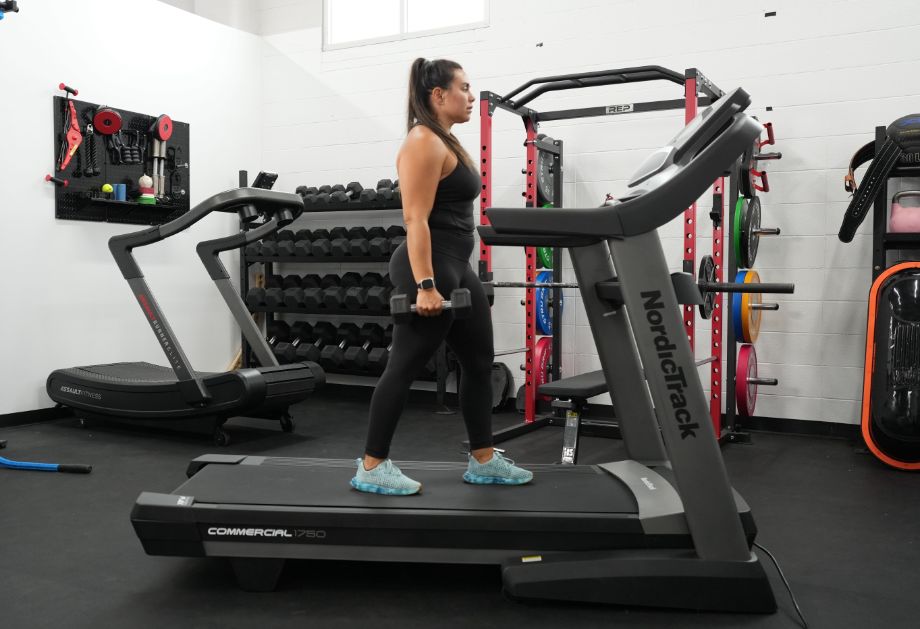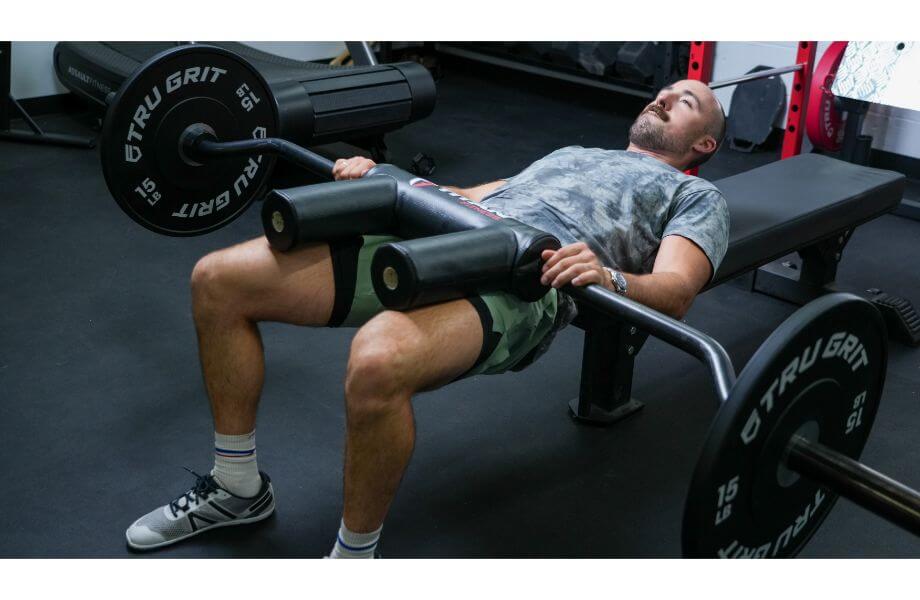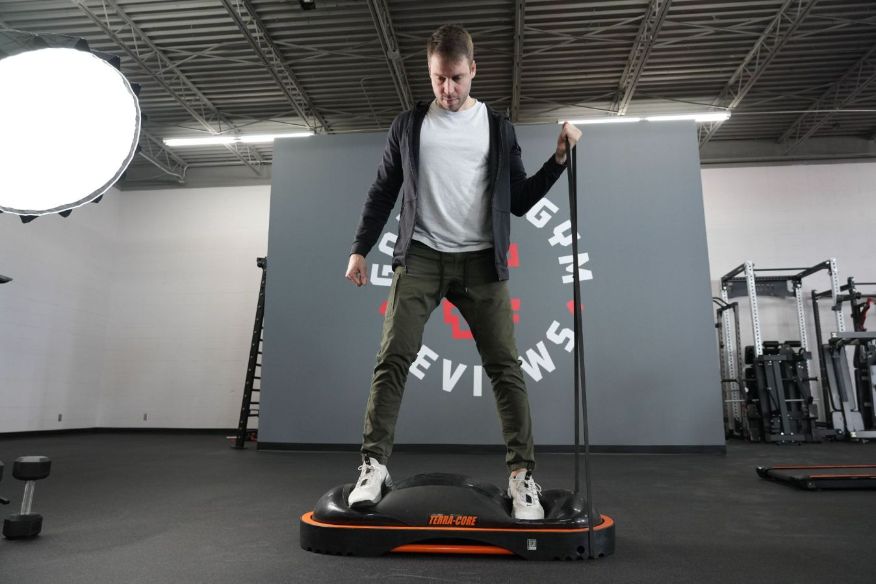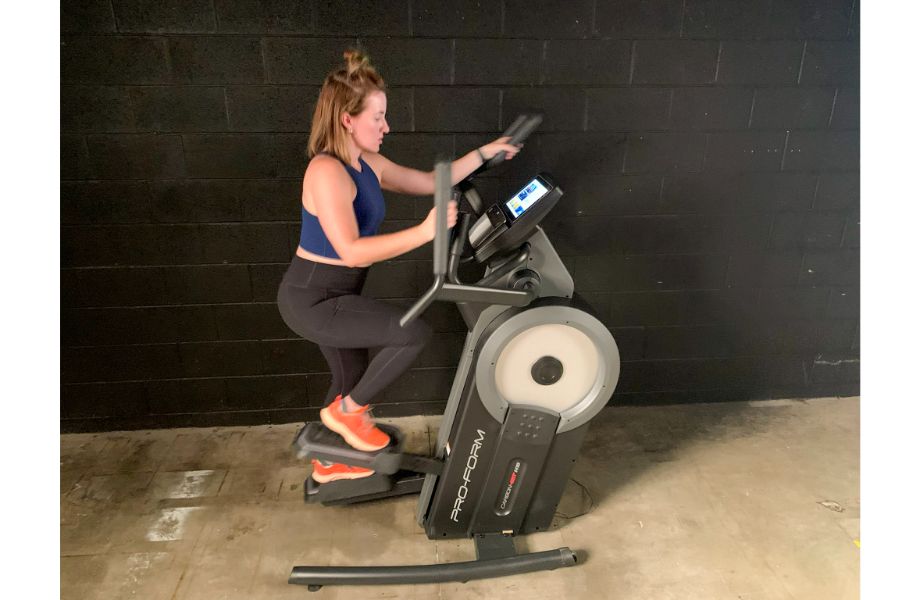We test and review fitness products based on an independent, multi-point methodology. If you use our links to purchase something, we may earn a commission. Read our disclosures.
Have you ever heard that calorie burn is higher right after exercise? Well, it’s true—and you can thank EPOC, or excess post-exercise oxygen consumption, for that. What is EPOC? Good question.
“Often called the ‘afterburn effect,’ EPOC is the amount of oxygen your body needs following a workout to return to its normal, resting state, or homeostasis,” says Amanda Capritto, certified personal trainer (CPT) and health coach. “When your oxygen needs are higher, your metabolic rate is also higher,” she clarifies.
This may translate to a higher energy expenditure, or more calories burned, until you get back to your pre-workout state.
But EPOC isn’t a shortcut to weight loss. In this guide, we’ll cover how EPOC works, how many extra calories you likely burn and how you can stimulate the post-workout boost.

The Benefit of EPOC
The biggest benefit of EPOC is increased caloric expenditure following a workout. According to the American Council on Exercise,1 EPOC can increase the energy output of an exercise session by about 6 to 15%.
To put it into perspective, a 185-pound person burns around 525 calories running at an 8-minute mile pace for 30 minutes, according to Harvard Health.2 If EPOC is kicked into full gear, that would mean this same person would burn about another 80 calories following that workout.
“While extra calorie burn can certainly contribute to weight loss over time, EPOC isn’t a magic bullet to reaching your goals faster. Consistency will always be the key to body composition changes,” Amanda says.
How to Stimulate EPOC
While any exercise will trigger EPOC to some degree, an August 2021 study that was published in the International Journal of Exercise Science3 suggests that higher-intensity exercises typically result in a greater EPOC response than lower-intensity workouts.
High-Intensity Interval Training
According to a separate study published in the International Journal of Exercise Science4 in November 2017, EPOC increases exponentially as exercise intensity increases.
This mostly comes down to adenosine triphosphate, or ATP. Your body relies on ATP for the energy needed to fuel your muscles. ATP can be created in two ways5: through aerobic respiration and anaerobic respiration.
“When you’re jogging on a treadmill, you’re doing an aerobic cardio exercise. Your heart rate increases and your body produces ATP from carbohydrates (or fats and amino acids if your glucose stores are low) in the presence of oxygen,” Amanda says.

However, when you kick it up into short bursts of higher intensities, your ATP needs become much higher6 and your body cannot effectively keep up the amount of oxygen needed to produce ATP aerobically.
As such, it becomes an anaerobic exercise. “For any high-intensity exercise that lasts more than a few seconds, your body gets that ATP from blood glucose or the glycogen that’s stored in your muscles and phosphocreatine (PCr),” Amanda says.
With high-intensity interval training (HIIT), your body switches between aerobic and anaerobic respiration. During your high-intensity bouts, you’re in an anaerobic state, using ATP at an extremely high rate, as much as 1,000 times7 more than when you’re at rest. When you’re in your recovery period, you’re back to an aerobic state. During this time, you’re essentially creating an energy and oxygen deficit.

During the recovery process post-workout, your body gets to work repaying that oxygen debt and bringing your body back to its resting state, or homeostasis. Your body returns to an aerobic metabolism, using oxygen to replace the ATP that was used during your workout. “And the more ATP you use, the longer it takes to replenish it,” says Amanda.
During this time, your body is also working to bring core body temperature back down to normal and remove lactate from the blood. Because of this, post-exercise oxygen consumption is much higher than normal. (Hence, the name “excess post-exercise oxygen consumption.”)
“This keeps your metabolic rate higher for longer, translating to a higher number of calories burned until you return to your baseline level—this is EPOC at work,” says Amanda.
While you use ATP and oxygen doing lower-intensity steady state cardio workouts too, it’s much less than HIIT workouts and resistance training. Because of this, research8 suggests the EPOC effect isn’t as significant.
Resistance Training

What about weight lifting and other resistance exercises? While higher intensity and/or longer duration workouts typically result in a greater EPOC response, resistance training is an anaerobic exercise that contributes, too.
In the August 2021 International Journal of Exercise Science study previously referenced, researchers reported that energy expenditure was significantly higher 14 hours after both resistance training and HIIT.
Splitting Up Exercise Sessions
Outside of HIIT workouts and resistance exercise, there’s a small amount of research that shows EPOC increases when exercise sessions are split up. Although this study is older, it’s worth mentioning since it’s pretty unique.
In October 1998, researchers reported in the Canadian Journal of Applied Physiology9 that EPOC magnitude is slightly higher when you do split cardio exercise compared to a continuous session.
They had 10 men exercise for 30 minutes straight and then for two 15-minute rounds, separated by a 6-hour break. EPOC was measured for 40 minutes following the 30-minute workout, and 20 minutes following each 15-minute workout. The researchers found that the combined effect of EPOC after each 15-minute exercise was greater than the single workout.
Again, there’s not much research supporting this concept, but it’s an interesting one worth mentioning. With the evidence we have, we can’t come to a conclusive statement, but it seems that the effect may be due to the fact that any given person can work harder for 15 minutes than they can for 30 minutes at one time.
Final Thoughts: What Is EPOC?
EPOC, or excess post-exercise oxygen consumption, is an increase in oxygen needs following an intense workout. This translates to a temporary boost in metabolic rate that can increase calorie burn. However, EPOC isn’t the secret sauce to fat loss. While it can contribute to weight loss over time, its power really depends on how consistent you are with your exercise routine.
Q&A: What Is EPOC?
Does Walking Cause EPOC?
All sustained physical activity causes EPOC to some degree, but exercise intensity is directly related to how long it lasts. Because walking is a low-intensity, steady-state exercise, EPOC isn’t as significant as with more intense workouts. However, walking comes with a ton of other benefits.
Which Exercises Generate The Most EPOC?
Intense workouts generate the highest rate of EPOC. High-intensity interval training has the most significant effect, but research shows that strength training also affects your post-workout oxygen consumption.
How Long Does EPOC Last?
There’s no solid scientific consensus on exactly how long EPOC lasts. An older 2003 report in Sports Medicine10 points out that some research suggests it comes and goes pretty quickly, while others estimate that it can last several hours.
It can depend on your fitness level too. In the same report, researchers say that the more cardiovascularly fit you are, the quicker you return to pre-exercise metabolic level. In other words, for those who train regularly, EPOC might not last as long because your body is more efficient at returning to its normal resting state.
References
- American Council on Exercise. 7 things to know about excess post-exercise oxygen consumption (EPOC). 2014. Accessed October 12, 2023. https://www.acefitness.org/resources/pros/expert-articles/5008/7-things-to-know-about-excess-post-exercise-oxygen-consumption-epoc/
- Harvard Health. Calories burned in 30 minutes for people of three different weights. March 8, 2021. Accessed October 12, 2023. https://www.health.harvard.edu/diet-and-weight-loss/calories-burned-in-30-minutes-for-people-of-three-different-weights
- Greer BK, O’Brien J, Hornbuckle LM, Panton LB. EPOC comparison between resistance training and high-intensity interval training in aerobically fit women. Int J Exerc Sci. 2021;14(2):1027-1035.
- Schleppenbach LN, Ezer AB, Gronemus SA, Widenski KR, Braun SI, Janot JM. Speed- and circuit-based high-intensity interval training on recovery oxygen consumption. Int J Exerc Sci. 2017;10(7):942-953. doi: 10.2165/00007256-200333140-00002
- American Chemical Society. Adenosine triphosphate. March 8, 2021. Accessed October 12, 2023. https://www.acs.org/content/acs/en/molecule-of-the-week/archive/a/adenosine-triphosphate.html
- Hargreaves, M, Spriet, L.L. Skeletal muscle energy metabolism during exercise. Nat Metab. 2020; 2:817–828. doi: 10.1038/s42255-020-0251-4.
- Baker JS, McCormick MC, Robergs RA. Interaction among skeletal muscle metabolic energy systems during intense exercise. J Nutr Metab. 2010;2010:905612. doi:10.1155/2010/905612
- Greer BK, Sirithienthad P, Moffatt RJ, Marcello RT, Panton LB. EPOC comparison between isocaloric bouts of steady-state aerobic, intermittent aerobic, and resistance training. Res Q Exerc Sport. 2015;86(2):190-195. doi:10.1080/02701367.2014.999190
- Almuzaini KS, Potteiger JA, Green SB. Effects of split exercise sessions on excess postexercise oxygen consumption and resting metabolic rate. Can J Appl Physiol. 1998;23(5):433-443. doi:10.1139/h98-026
- Børsheim E, Bahr R. Effect of exercise intensity, duration and mode on post-exercise oxygen consumption. Sports Med. 2003;33(14):1037-1060. doi:10.2165/00007256-200333140-00002
Further reading

Are audio workouts the best choice for your training goals? Find out in our Aaptiv Fitness App Review. Read more

Looking for the best quiet treadmill? We’ve done all the dirty work so you don’t have to stress. Read more

Our nutrition experts put this plant-based protein to the test in our Ghost Vegan Protein review, helping you determine whether it’s right for you! Read more

Are protein shakes good for weight loss? Learn the answer, plus our best tips for choosing protein powders and how to use them for weight loss. Read more

